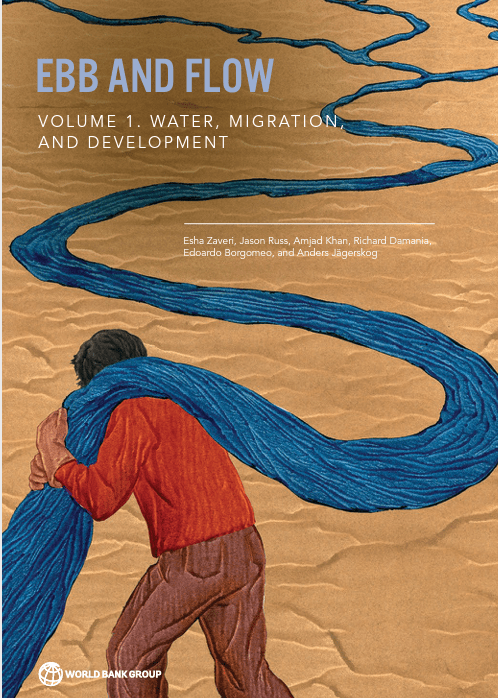Ebb and Flow, Volume 1 : Water, Migration, and Development
 |
Flux et reflux, volume 1 : Eau, Migration et Développement
rapport ; en 2 volumes Aug 2021 ; 161 pages
Aut. Richard Damania &
Ed. World Bank - Washington
Téléchargeable sous format: PdF
Téléchargeable chez l'éditeur
Page de présentation d'un éditeur
 Rapport Volume 2 : Water in the shadow of conflict in the Middle East and North Africa
Rapport Volume 2 : Water in the shadow of conflict in the Middle East and North Africa
 Résumé Volume 1
Résumé Volume 1
 Résumé Volume 2
Résumé:
Résumé Volume 2
Résumé:Cette étude présente de nouvelles données mondiales permettant de mieux comprendre comment les fluctuations de la disponibilité de l'eau, induites par les chocs pluviométriques, influencent les migrations internes et le développement régional.
L'étude révèle que les déficits cumulatifs en eau entraînent cinq fois plus de migrations que les excès d'eau. Le rapport propose un panel d'options politiques qui se chevauchent et se complètent, ciblant à la fois les personnes et les lieux afin d'améliorer les moyens de subsistance et de transformer les crises liées à l'eau en opportunités de croissance. Un message clé est que les politiques qui se concentrent sur la réduction des impacts des chocs hydriques doivent être complétées par des stratégies qui élargissent les opportunités et renforcent la résilience à long terme des communautés. Abstract:
This study presents new global evidence to better understand how fluctuations in water availability, driven by rainfall shocks, influence internal migration and regional development.
It finds that cumulative water deficits result in five times as much migration as water excess does. But there are important nuances in why and when these events lead to migration. Where there is extreme poverty and migration is costly, water deficits are more likely to trap people than induce them to migrate. Water shocks can also influence who migrates. Workers leaving regions because of water deficits are often less advantaged than typical migrants and bring with them lower skills, raising important implications for the migrants themselves and receiving regions. Cities are the destination of most internal migrants, but even here, water scarcity can haunt them. Water shortages in urban areas, which lead to so-called day zero events, can significantly slow urban growth and compound the vulnerability of migrants. No single policy can be completely effective at protecting people and their assets from water shocks. Instead, the report puts forth a menu of overlapping and complementary policy options that target both people and places to improve livelihoods and turn water-induced crises into opportunities for growth. A key message is that policies that focus on reducing the impacts of water shocks must be complemented by strategies that broaden opportunities and build the long-term resilience of communities. Doing so will give individuals more agency to determine the best outcome for themselves and to thrive wherever they may choose to locate.
Mot clef: |
Editeur/Diffuseur: |
|
World Bank - Washington - Etats Unis |
En cas de lien brisé, nous le mentionner à communication@pseau.org